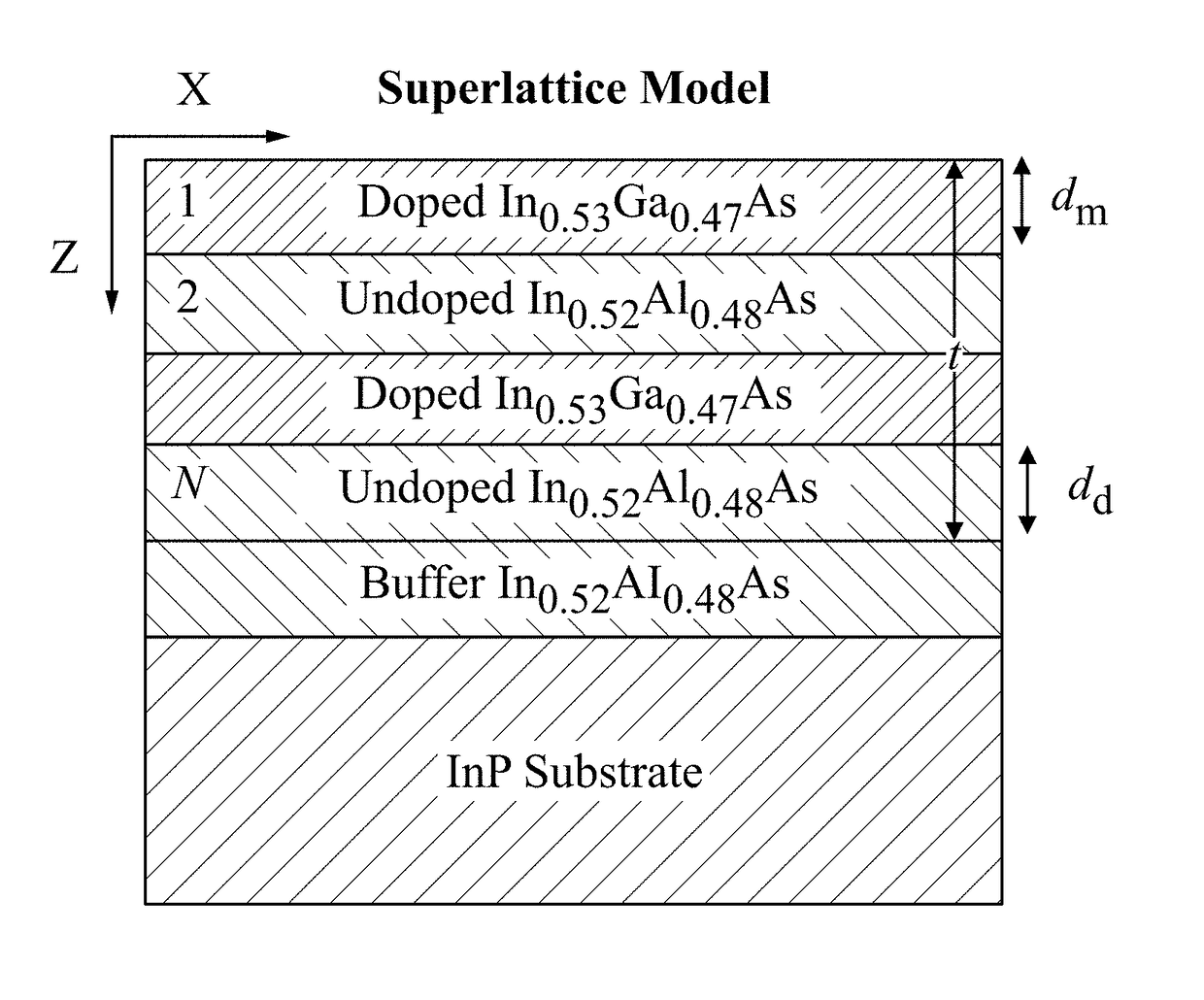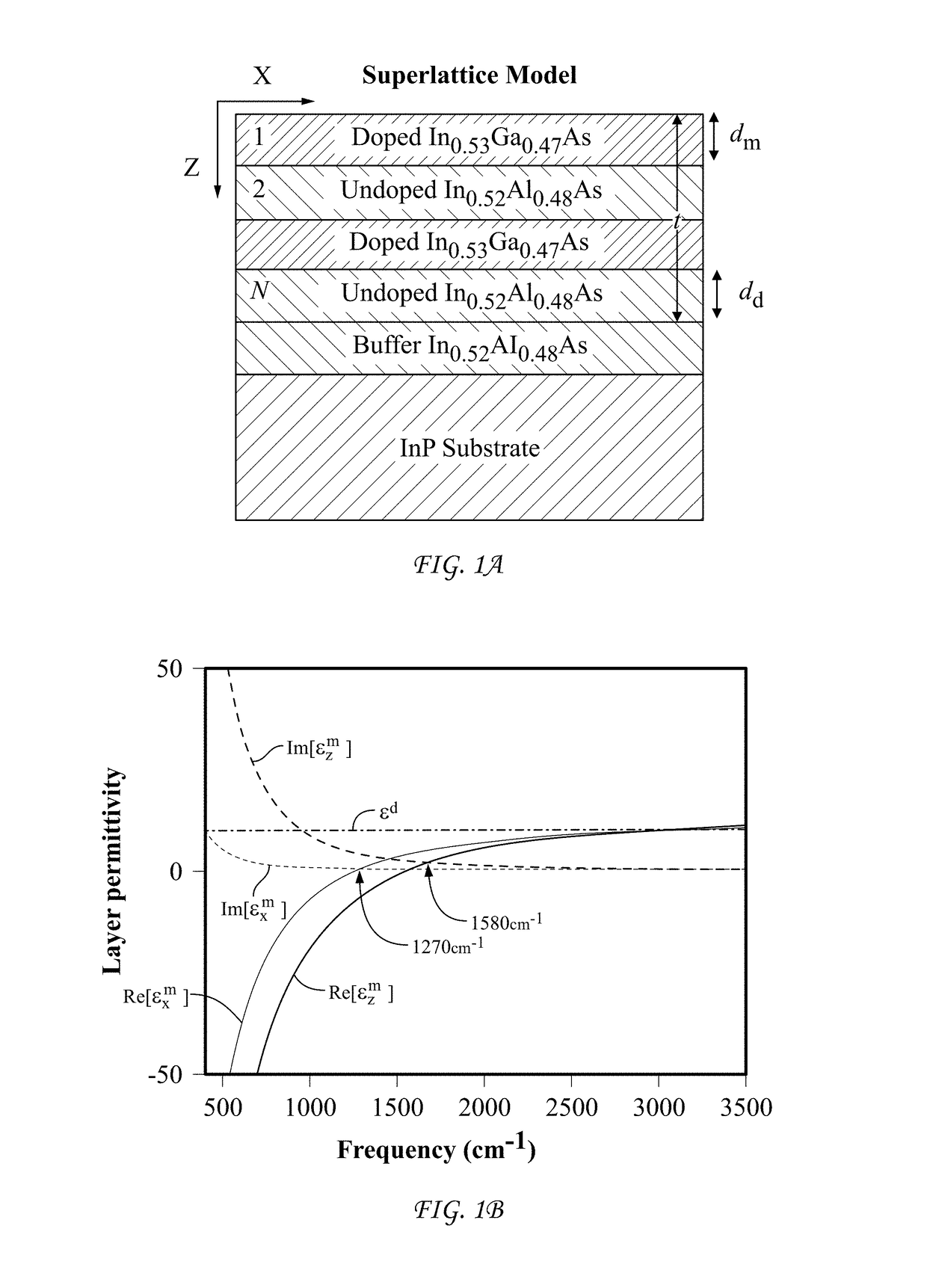Thermal emitter comprising near-zero permittivity materials
a technology of permittivity and thermal emitter, which is applied in the field of infrared light sources, can solve the problems of inconvenient use, poor efficiency, and the ultimate efficiency limit of incandescent sources due to emission into unwanted frequencies and directions
- Summary
- Abstract
- Description
- Claims
- Application Information
AI Technical Summary
Benefits of technology
Problems solved by technology
Method used
Image
Examples
Embodiment Construction
[0020]Hyperbolic materials describe a class of optical materials with extreme anisotropy in their in-plane and out-of-plane permittivity functions. In such materials, the real part of their permittivities are of opposite signs at a particular or a range of frequency. They are called hyperbolic materials, since the isofrequency surfaces of these materials are of hyperbolic shape. There are two types of hyperbolic material: one of which has the in-plane permittivity negative and the out-of-plane positive, called type II; and the other type is called type I, which has the out-of-plane permittivity negative and the in-plane positive. Natural materials can possess this property, such as monolayer of boron nitride. Materials with this property can also be created with a stack of alternating subwavelength layers of negative and positive permittivity materials, or an array of negative permittivity wires in a positive permittivity environment. These engineered heterogeneous materials with hy...
PUM
 Login to View More
Login to View More Abstract
Description
Claims
Application Information
 Login to View More
Login to View More - R&D
- Intellectual Property
- Life Sciences
- Materials
- Tech Scout
- Unparalleled Data Quality
- Higher Quality Content
- 60% Fewer Hallucinations
Browse by: Latest US Patents, China's latest patents, Technical Efficacy Thesaurus, Application Domain, Technology Topic, Popular Technical Reports.
© 2025 PatSnap. All rights reserved.Legal|Privacy policy|Modern Slavery Act Transparency Statement|Sitemap|About US| Contact US: help@patsnap.com



